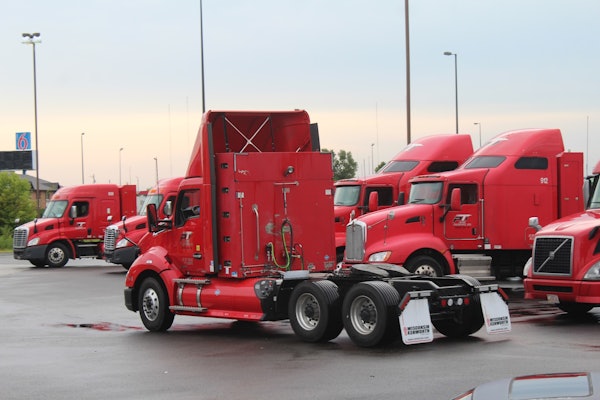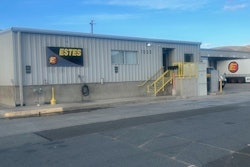I stopped at a rest area early one morning last month. As usual, every truck space was filled. And as usual, the deafening hum and illuminated running lights told the tale: most of those trucks’ engines were idling.
This scene is so common that I usually wouldn’t even notice it. But this time was different. Just hours earlier, the Energy Department had announced that the national average retail diesel price was more than $1.70 a gallon – the highest level the department has ever recorded. Here sat a few dozen trucks, each burning a gallon or two of diesel every hour and not producing any revenue. And that was just one rest area on one Interstate highway in Alabama. Think of the fuel consumed nationwide by parked trucks in just one night!
Data compiled by A.G. Edwards shows a strong correlation between diesel price increases and trucking company failures. According to the American Trucking Associations’ analysis of that data, for every 10-cent increase in the price of diesel fuel, an average of 1,000 motor carriers with five or more trucks file for bankruptcy. The number of smaller carriers and owner-operators that fail is no doubt even higher.
Griping about diesel prices is the trucking industry’s equivalent to complaining about the weather. And as the saying goes, everyone complains about diesel prices, but no one does anything about them. Yes, there are systems that will help you locate the best possible price and save 3 or 4 cents a gallon. And if you are large enough, you can negotiate deals to lock in lower prices – if you do so before the price surges. But individually or even as an industry, there’s nothing we can do to dramatically change fuel prices.
You can, however, control consumption. Last year, CCJ addressed fuel economy in a series of articles. You will find links to them at www.ccjmagazine.com under CCJ Special Info. The most significant area of concern probably is engine idling. You get zero miles per gallon from an idling truck. And you certainly don’t get a fuel surcharge on diesel burned while idling.
Still, drivers must remain warm in the winter and cool in the summer and be able to run appliances in their sleepers. Because engine electronics let you determine whether and when your drivers idle, you could simply forbid them from idling at certain times. This won’t work in long-haul trucking. The competition for drivers is too fierce.
Anti-idling bonuses might be more successful and humane. Give drivers a choice between cash and, for example, keeping the sleeper at 75 degrees during February. Phillip Long, a driver for a major flatbed carrier, averaged 6.78 miles per gallon in 2001 by never idling. Driven by the fuel incentive, Long simply used a sleeping bag rather than the truck’s heater. To encourage this attitude, you might even spring for a sleeping bag or electric blanket.
Incentives will get you only so far, however. Examine alternatives to idling, such as direct-fired burners for heating, thermal storage devices for heating and cooling and auxiliary power units for heating, cooling and electrical power. The Argonne National Laboratories has gathered resources at www.ipd.anl.gov/ttrdc/idling.html to help truck owners explore the payback on idling alternatives. Another resource is TMC’s Recommended Practice 1105A on idling-limiting systems.
There is much interest these days in idling reduction, especially in truck stop electrification. A major privately funded project just began in Atlanta. The Environmental Protection Agency awarded a $200,000 grant under its new SmartWay Transport program to electrify some truck stops. ATA is working with NATSO, which represents truck stop and travel center owners, to find a location for a pilot electrification project.
These initiatives should offer enormous paybacks, but electrication is years away from widespread availability. You can’t wait for solutions. Tackle idling now – before you become a statistic.








